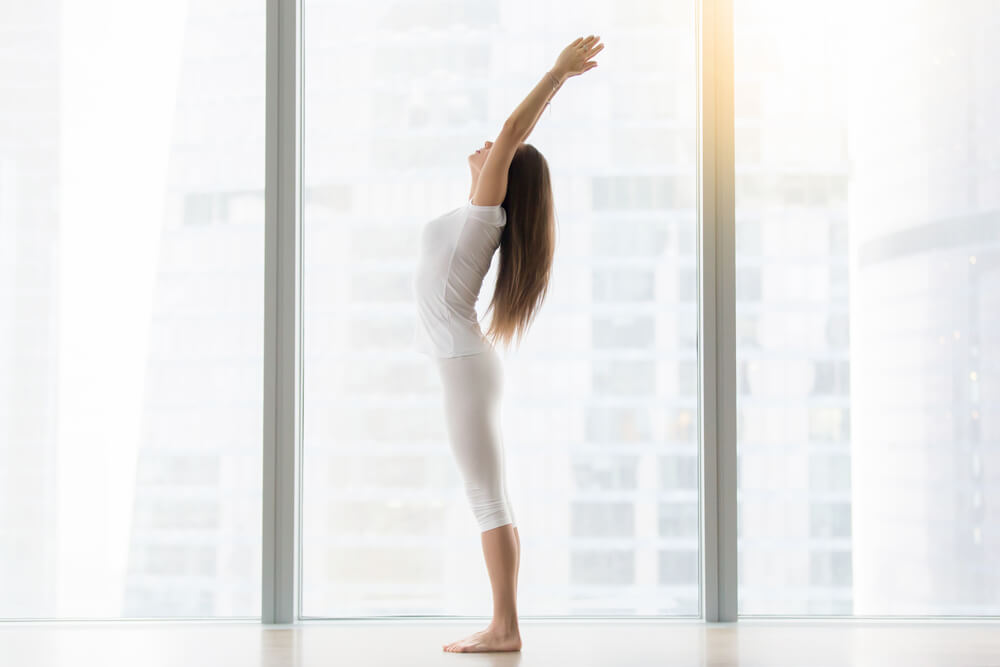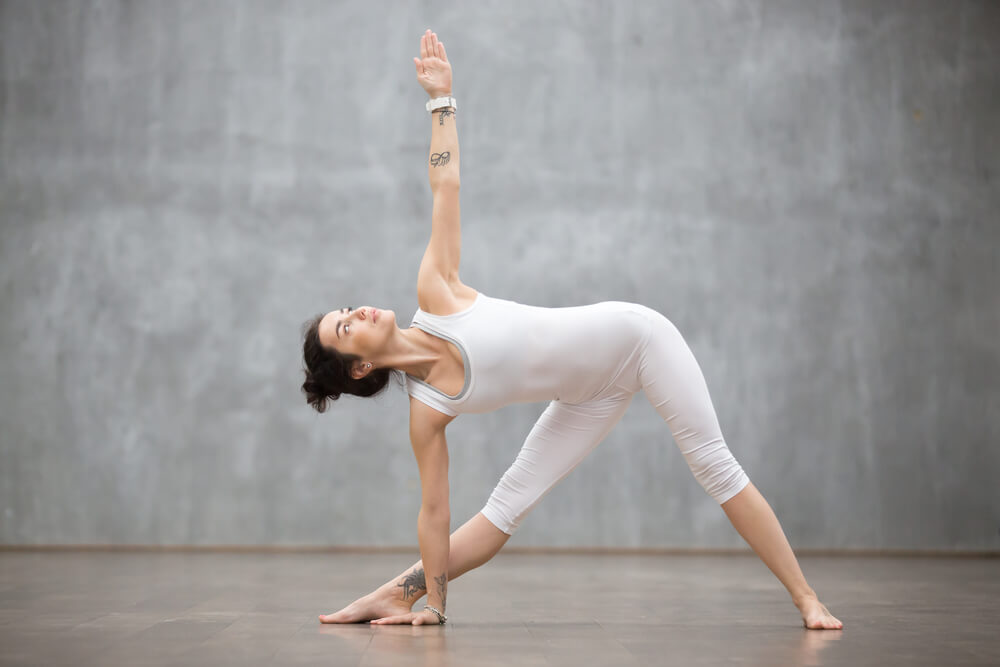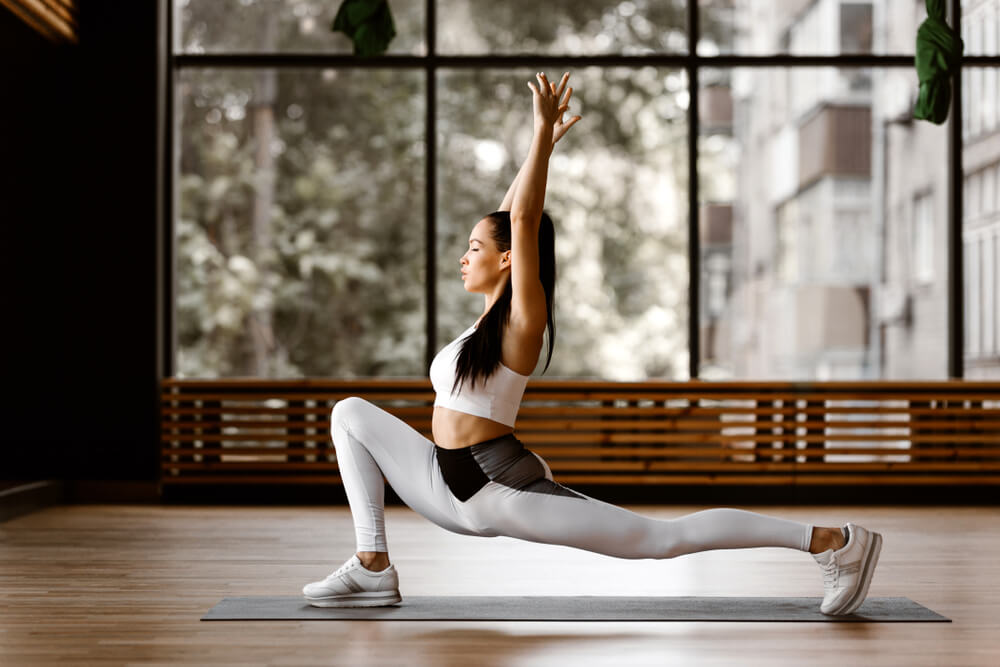5 Standing Yoga Poses That Promote Fitness and Productivity at Work

Office yoga poses and standing yoga stretches help relieve pressure points, most especially on the spine, shoulders, and hips, brought about by prolonged periods of sitting down. It breaks the monotony of being sedentary.
Among many, standing yoga benefits include:
- Improved flexibility
- Normalized heart rate and blood pressure
- Decreased stress and lower cortisol levels
- Improved immune response
- Increased serotonin levels leading to feelings of happiness
- Developing muscle mass and enhanced muscle tone
- Lowered risk for injury and disability
- Enhanced blood circulation
- Reduced feeling of fatigue and burnout
Are standing up yoga poses suitable for you?
Why Should You Practice Short Yoga Breaks in the Office?
According to the results of a 2016 survey conducted by the US Bureau of Labor Statistics that sought to find out how long workers spend sitting, standing or walking on a typical workday, the numbers vary widely across different groups of occupations. Software and applications developers spend as much as 90 percent of a typical day sitting. People whose occupations fall under the following categories have also been found to spend the majority of their workday sitting:
- Bus drivers, school or special client
- Accountants
- Insurance sales agents
- Lawyers
- HR Managers
- Mechanical Engineers
The Centers for Disease Control and Prevention (CDC) estimates that a combination of poor diet and lack of physical activity contributes to 300,000 deaths in the US every year. The CDC has warned that the young and elderly are equally vulnerable to life-threatening diseases when a healthier, non-sedentary lifestyle is not actively and regularly pursued.
Performing basic standing yoga sequence during your workday can significantly help you to avoid the serious consequences of physical inactivity to your health, well-being, and productivity. Changing positions at your standing office desk using yoga poses at work is so much easier than you ever could have imagined.
Try this standing yoga poses class to get yourself started on a healthier lifestyle right now.
Tadasana (Mountain Pose)
This is the most basic among yoga poses standing. Start by standing up with your nape, spine and lower back properly aligned. For your lower body, keep thighs, legs, and feet together as you keep all of which thoroughly straightened. Next, bring your head up so that you are facing the ceiling. As you do, bring your arms up with palms pressed against each other. For beginners, keep your feet flat against the floor. To increase the handicap of this pose, more advanced practitioners should lift their heels and stand on their toes.
Uttasana (Standing Forward Bend)
From a yoga standing posture, bend forward so that your face is turned in towards your legs. Pull in your upper body inwards as close to your lower body as much as you can. You may drop your arms on the sides of your toes or, you may bend your elbows as you touch your ankles. As you perform this standing yoga pose, make sure that you refrain from bending your knees. Maintain the alignment of your hips, thighs, and legs. Keep your toes locked throughout as you hold the pose for as long as you can.
Utkatasana (Chair Pose)
Among the more challenging standing yoga poses for beginners, Utkasana helps firm up your core, tone muscles of the arms and thighs, and enhance circulation all at the same time. Begin by standing up straight, feet slightly apart. Mimic a squat position while simultaneously keeping both feet flat against the floor. As you do, bring your arms up in front of you as you turn your head up to towards your palms. Make sure to keep your back straightened out as you hold the pose for several minutes.
Following proper yoga standing postures help make sure that you obtain the optimum benefit that can be derived from practicing this pose.
Utthita Trikonasana (Triangle Pose)
Although not exactly counted among the more easy standing yoga poses, Utthita Trikonasana resembles a popular stretching exercise that you have probably tried many times before. Performing this pose right next to your office desk can help relieve and prevent shoulder, neck and lower back pains.
From a standing position, stand with your feet wide apart, right toes facing to the right while the left toe is turned to the front. Twist your hips to the right and slowly bend your upper body to your right. Bring your left arm up, fingertips facing the ceiling, as you lay your right palm flat against the floor. Turn your head up to the left so that you are facing the ceiling. Hold the pose for as long as possible then, do the same for the other side.
High Lunge Pose
Among the more popular yoga poses and names, the high lunge pose does not really have a Sanskrit name. One of the most basic yoga poses standing, the high lunge pose resembles lunges which should already be familiar to you if you have ever been to a gym class before.
To do this pose, bring your right leg backwards. As you do, keep your knees straight and your toes against the floor, heel up. As for your right leg, bring your upper body down so that your left knee bends forward. Keep your left toes flat against the floor. Bring your arms up over your head, keeping your elbows straight as you face forward. Switch your legs.
Do Standing Yoga Poses To Encourage Physical Activity
Performing simple standing yoga poses in between drafting a report and calling a net meeting can significantly improve your fitness level and enhance your wellness now and in the years to come. If standing desk yoga could potentially decrease your chances of contracting chronic ailments, wouldn’t you rather stand from office chair and spend a few minutes performing these basic yoga poses?
Share your experience of practicing these five standing yoga poses. Have these yoga poses improved the physical and mental aspects of your health? Would you recommend these yoga poses to your colleagues and friends?






Comments